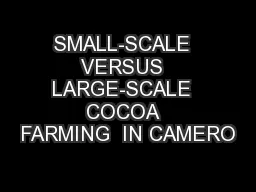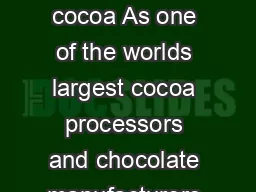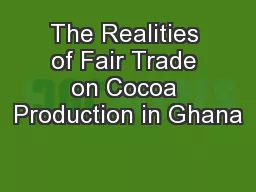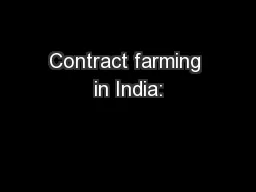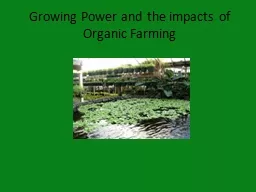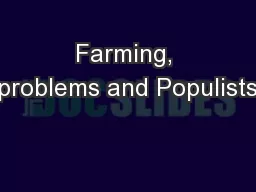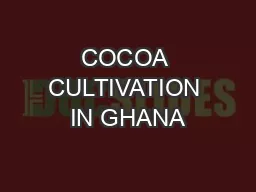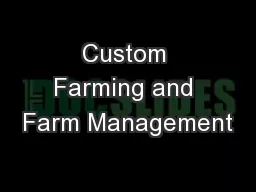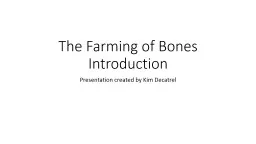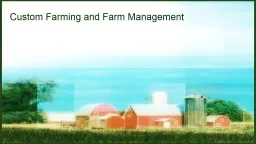PPT-SMALL-SCALE VERSUS LARGE-SCALE COCOA FARMING IN CAMERO
Author : ellena-manuel | Published Date : 2015-11-09
By Chi Bemieh Fule August 6 2013 THESIS PRESENTATION Outline of todays presentation Justification of the study Problem statement Hypotheses Conceptual framework
Presentation Embed Code
Download Presentation
Download Presentation The PPT/PDF document "SMALL-SCALE VERSUS LARGE-SCALE COCOA ..." is the property of its rightful owner. Permission is granted to download and print the materials on this website for personal, non-commercial use only, and to display it on your personal computer provided you do not modify the materials and that you retain all copyright notices contained in the materials. By downloading content from our website, you accept the terms of this agreement.
SMALL-SCALE VERSUS LARGE-SCALE COCOA FARMING IN CAMERO: Transcript
Download Rules Of Document
"SMALL-SCALE VERSUS LARGE-SCALE COCOA FARMING IN CAMERO"The content belongs to its owner. You may download and print it for personal use, without modification, and keep all copyright notices. By downloading, you agree to these terms.
Related Documents

